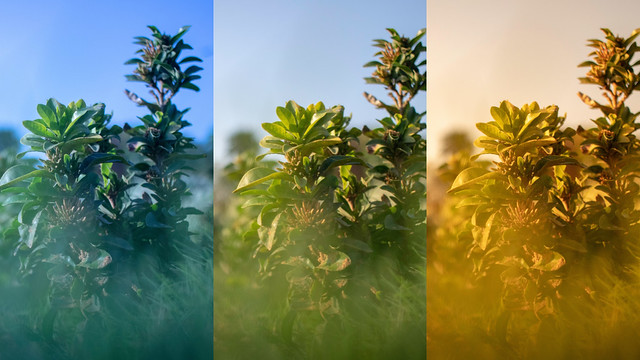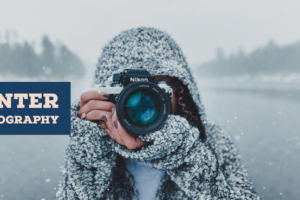
White Balance is one of the important citizens in the photography kingdom. In fact, it decides the overall color of the kingdom. I know it is confusing. Let me now talk in normal words. White Balance is all about setting your camera in such a way that you get all the accurate colors in your image.
Before going into more detail about it, you should first understand why there is a need to set the white balance. I’d like to explain this to you with an example below. Below is an image which was taken in different white balances.
The image in the extreme left in figure 1 has a bluish tone because it was taken with Fluorescent lighting setting. And the image in the extreme right is more yellowish due to the tungsten (incandescent/bulbs) lighting. That’s why when you set a white balance you are actually setting the accuracy of colors in a photo. If you would look at the middle image of Figure 1 above, you would notice it is the best photo in terms of color accuracy.
In the world of photography, we use terms such as color or temperature to define a white balance. Bringing down the temperature cools down the image and that’s why a bluish light appears in your final output. Increasing the temperature adds warmer to your image to create a yellowish effect.
Setting White Balance
Each manufacturer provides a set of presets in their cameras to adjust the white balance. In cases where you are stuck upon to take a decision, you should just leave the white balance to automatic. That’s what I do. I leave the white balance to automatic and I adjust them accordingly later in Lightroom/Photoshop for more accuracy.
Anyways, below is a list of White Balance settings that you might find in your camera.
Auto: Camera guesses the white balance based on the light conditions. This is what I rely on every time. Yes, every single time.
- Shade: This mode will bring warmer in your image.
- Flash: This is also a warmer mode and is used mostly when you use a flash.
- Tungsten: This mode generally represents with a small bulb and is very ideal for indoor shootings. It usually cools down the colors in your clicks.
- Fluorescent: This mode tries to balance the cool light by warming up your clicks.
- Daylight/Sunny: This mode is very ideal for outdoor shootings with normal daylight conditions.
There are several ways to find your perfect white balance which we will discuss later in another detailed post. However, share your views on this post by commenting in the comment section below.
For more similar posts on photography, stay tuned with our blog.
Also read: Basics of Photography






Hi Bob,
Thanks for your comment.
Yes, almost all the photographers always rely on the automatic white balance mode to capture images.
But trust me, things will be more interesting when you try different white balance settings to make your output more dramatic.
Thanks
DERIN
TechDotMatrix